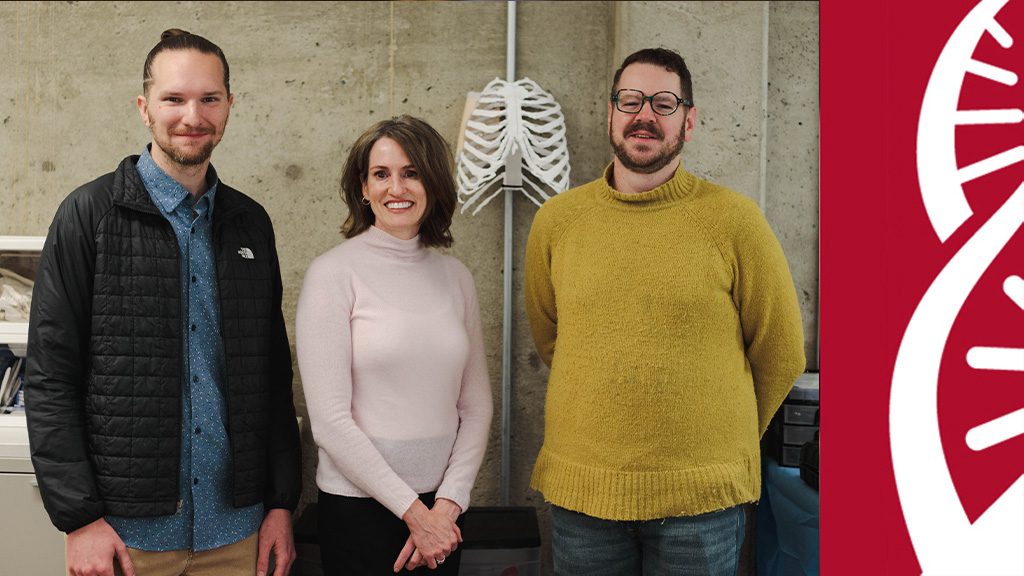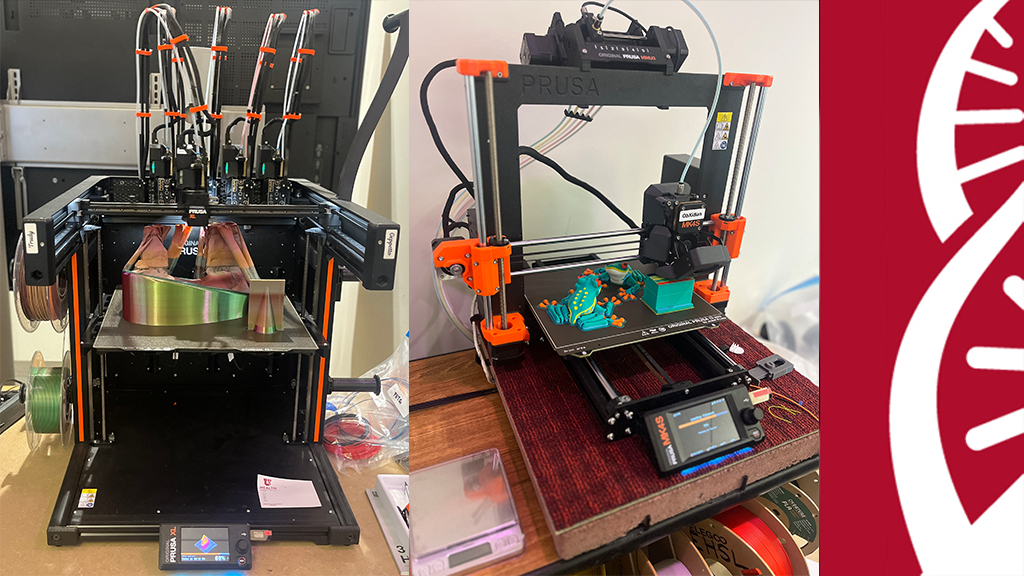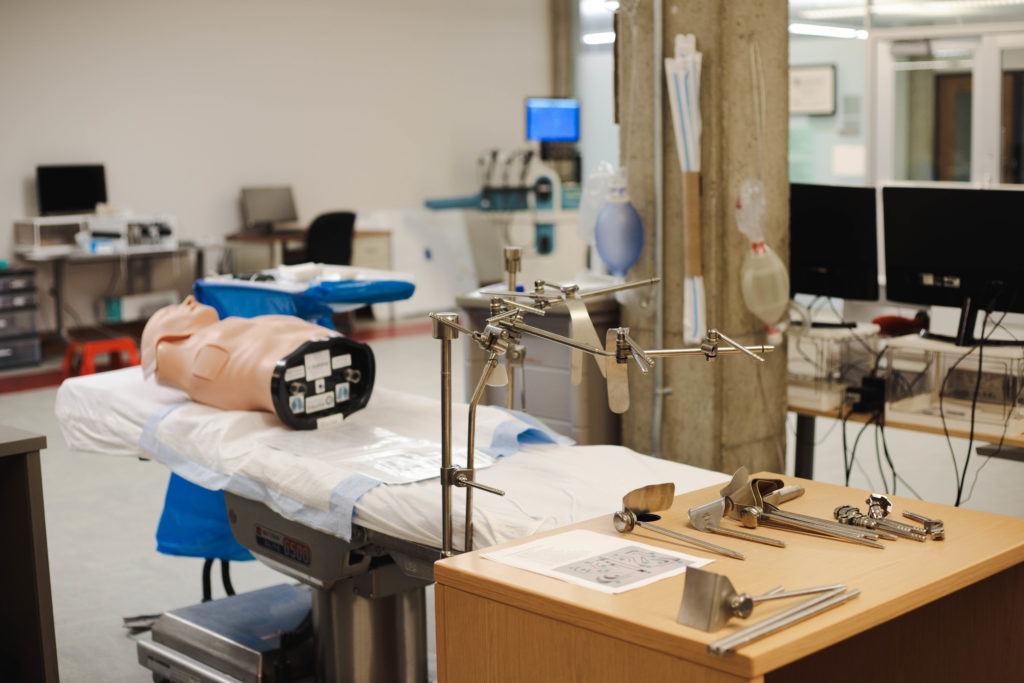
Up until October 2023, the Surgical Simulation Lab on the lower level of the Eccles Health Sciences Library occupied a small corner of the Center for Medical Innovation. After CMI relocated downtown, Nurse Educator, Karen Porter, was granted full occupancy of the lab–2,000 square feet. In this space, Karen simulates chest tube placements and tracheostomies with residents.
Before Karen utilized the 3D printing services of the Marriott Library and the Eccles Health Sciences Library, she crafted trachea models by hand by reusing products from various avenues, such as from “contaminated” surgical kits. She wraps toilet paper rolls in leftover packaging foam, Ioban (antimicrobial incise drape), and a zip-tie, which mimics the laryngeal prominence–the bump that protects the voice box. The outer casing is artificial silicone skin. Surgeons make a 1 centimeter incision next to the laryngeal prominence and insert the trach there.
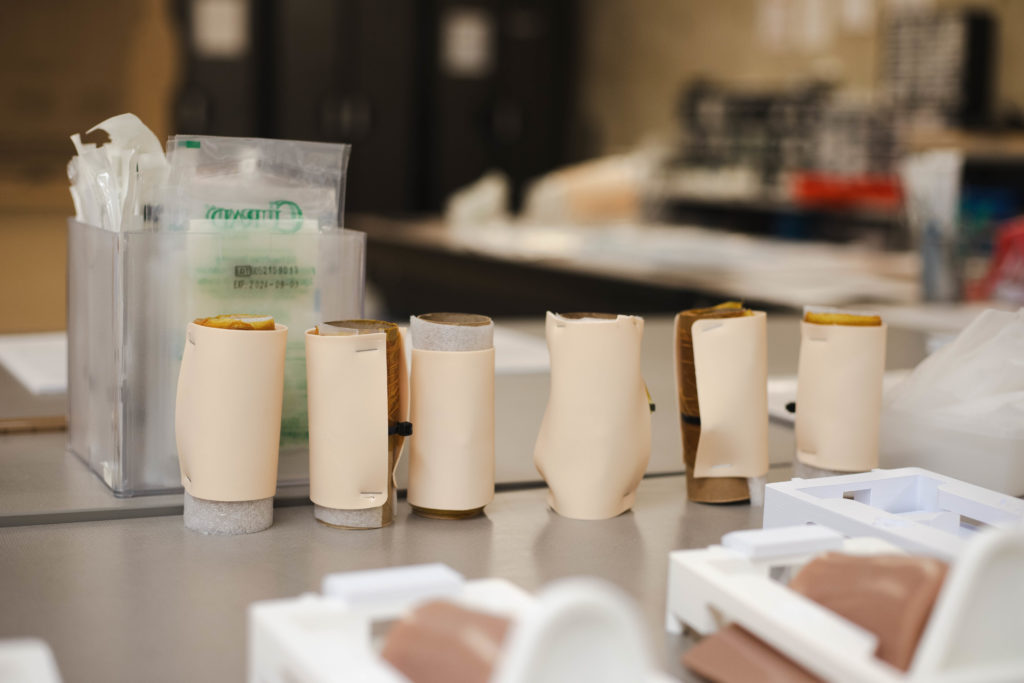
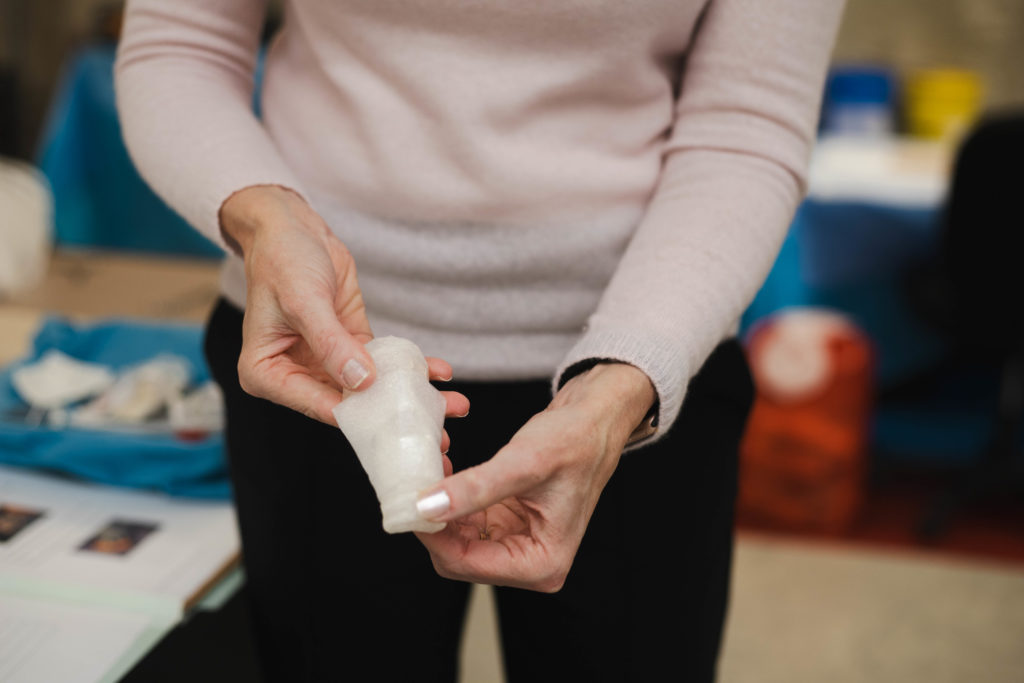
Karen found Mark Howell by chance. Mark used to run 3D printing and VR services at the Eccles Health Sciences Library. Karen stopped by the computer lab and her and Mark struck up a conversation about real-world prototypes. She explained her sustainable process of building her own trachea models. With his background in mechanical engineering, he felt that he could help her with 3D printing.
Mark discovered a ribcage model from the National Institutes of Health and using Adobe Substance Modeler, he was able to re-sculpt it and connect the ribs to the sternum to simulate a rigid spine. Due to the complexity of the model, it is split down the middle, and this also allows Karen to use a half section that lies flat on a table.
Mark is now a Lab Specialist in the J. Willard Marriott Library Protospace. Karen and Mark designed anatomical models such as the ribcages and trachea models seen in the photo below.
Matthew Elliott had been working in 3D printing at Marriott Library as a student employee when Mark Howell left his position at EHSL. Matthew applied for Mark’s vacant position and got the job. In the last month, Matthew has printed more ribcages for the Surgical Simulation Lab, along with designing and printing knot-tying boards. The knot-tying boards were prototyped by comparing features on old boards and other kinds online.
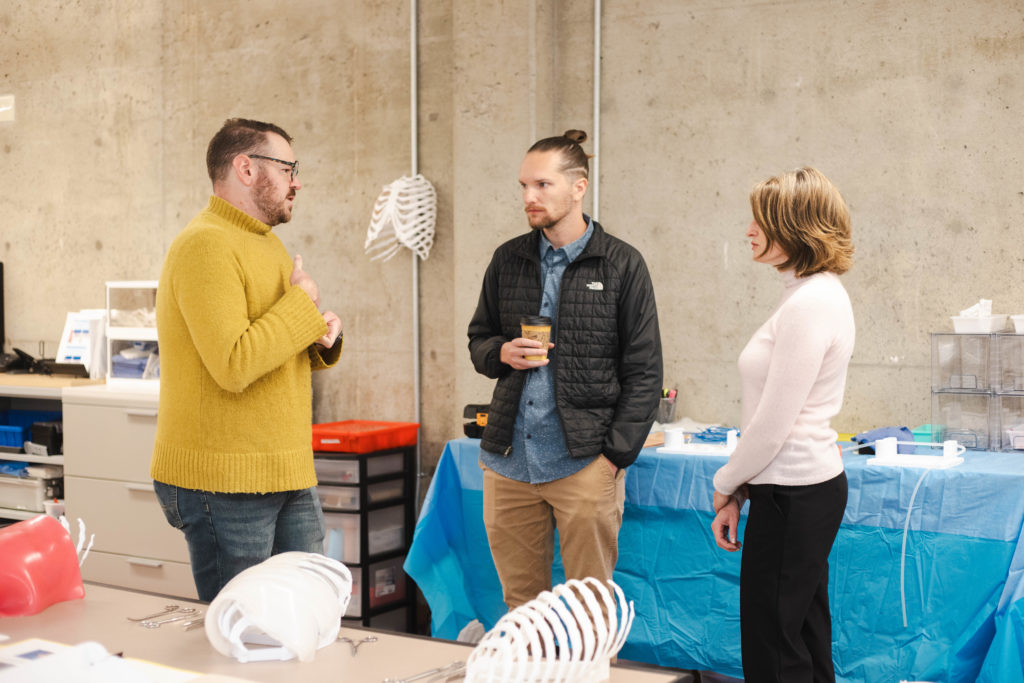
Knot-tying boards are used for tying surgical knots. Once this skill is mastered, the student learns how to suture and then tie a knot that holds the suture in place–it’s very similar to sewing.
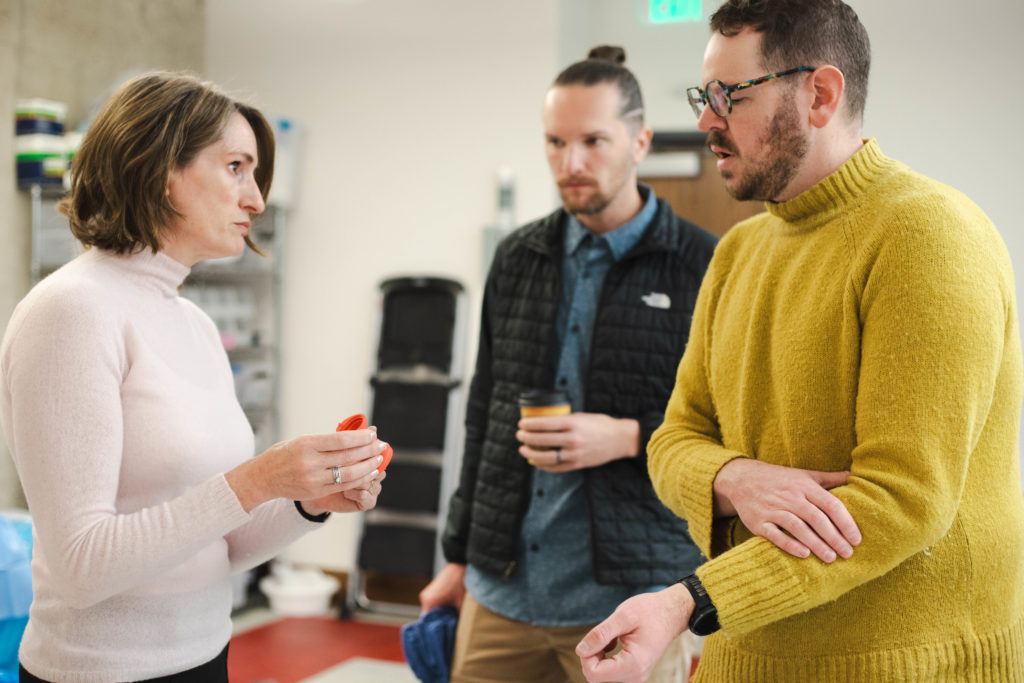
Students will test the knot-tying boards on Monday, November 25. Feedback will be given to Karen and Matthew so they can continue to workshop the design.
This collaboration between Surgical Education, the Eccles Health Sciences Library, and the J. Willard Marriott Library is invaluable as it is innovative, cost-effective, sustainable, and harmonious.
All photos taken by Hanna Colm.

